Ask the virtual scientist
About PSG
The Planetary Spectrum Generator (PSG) is a radiative transfer model suite for synthesizing and retrieving planetary spectra (atmospheres and surfaces) for a broad range of wavelengths (50 nm to 100 mm, UV/Vis/near-IR/IR/far-IR/radio) from any observatory (e.g., JWST, ALMA, Keck, SOFIA), any orbiter (e.g., MRO, ExoMars), or any lander. PSG also permits to synthesize/retrieve mass-spectrometry data of orbiters, landers and laboratory instrumentation. This is achieved by combining several state-of-the-art radiative transfer models, spectroscopic databases and planetary databases (i.e., climatological and orbital). The tool first became online in 2015, with a first paper reporting the suite capabilities reported in (Villanueva et al., 2018).
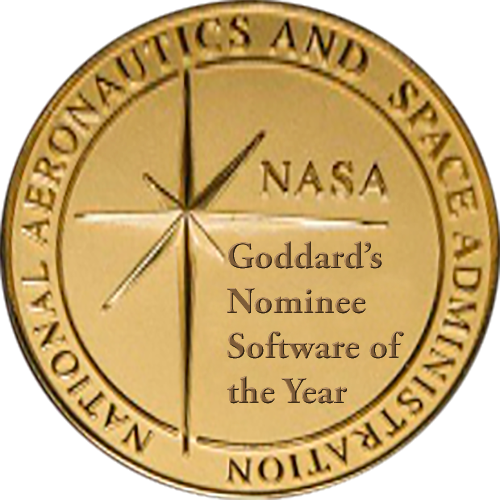 |
In 2022, PSG was selected as Goddard's nominee for NASA's Inventions and Contributions Board (ICB) Software of the Year (SOY) award. This is a great recognition from the largest NASA center, and it highlights the novel contributions that this software makes towards new scientific discoveries and to the advancement of space exploration. Importantly, this distinction further motivates us to continue our prime objective of providing state-of-the-art spectroscopic modeling to the public in a fully open and free manner. This year, PSG also became NASA’s most visited site with multiple views (>20 views/visit), demonstrating the great need of the public for such capabilities. Thank you for your support and ad astra! |
The latest version of PSG has the following general capabilities:
- A 3D (three-dimensional) orbital calculator for most bodies in the Solar system, and all confirmed exoplanets. Possible observing geometries include observatory, full sky view, nadir, limb, solar/stellar occultation, transit, etc. The orbital calculator provides all possible geometry parameters needed for computing spectroscopic fluxes.
- The program can ingest billions of spectral lines of almost 1,000 species from several spectroscopic repositories (e.g., HITRAN, JPL, CDMS, GSFC-Fluor, ExoMol). For mass-spectrometry, PSG operates with a high-resolution (mDa) fragmentation pattern database for +20,000 species calibrated with the NIST public library.
- Atmospheric models (e.g., equilibrium chemistry, cometary models), databases (e.g., Mars GCMs, Earth/NASA-MERRA2) and templates (vertical profiles of temperature and abundances) are available for the main atmospheres (Venus, Earth, Mars, Titan, Neptune, Uranus), and general atmospheric and surface parameters are available for the other bodies.
- Radiative transfer analysis can be performed with several models:
- Multiple scattering spherical modeling, PUMAS.
- Line-by-Line (LTE) Cometary Radio Model, CEM.
- Line-by-Line (non-LTE) Cometary Fluorescence Model, CEM.
- Generalized Continuum Model, CONTINUUM.
- Mass spectrometry modeling, MASS.
- The code synthesizes spectra in any desired radiance unit (spectral radiance, spectral intensity, spectral flux, radiant energy density, irradiance, spectral irradiance, magnitude, etc.) and transmittance output.
- It includes the possibility to integrate stellar templates by adopting the Kurucz 2005 stellar templates (0.15-300 μm), which is complemented at short wavelengths (below 0.4 μm; X-ray, EUV, FUV) with the MUSCLES Treasury Survey. When considering the G-type template, the spectrum is complemented with the ACE solar spectrum (2-14 μm) in the infrared and with the LISIRD template (below 0.4 μm) in the UV.
- It includes a realistic noise calculator for a broad range of instruments, including heterodyne instruments in the radio, interferometers, AOTF systems, LIDAR instruments, coronagraphs, orbital cameras. The noise module includes a broad range of background and systematic sources of noise.
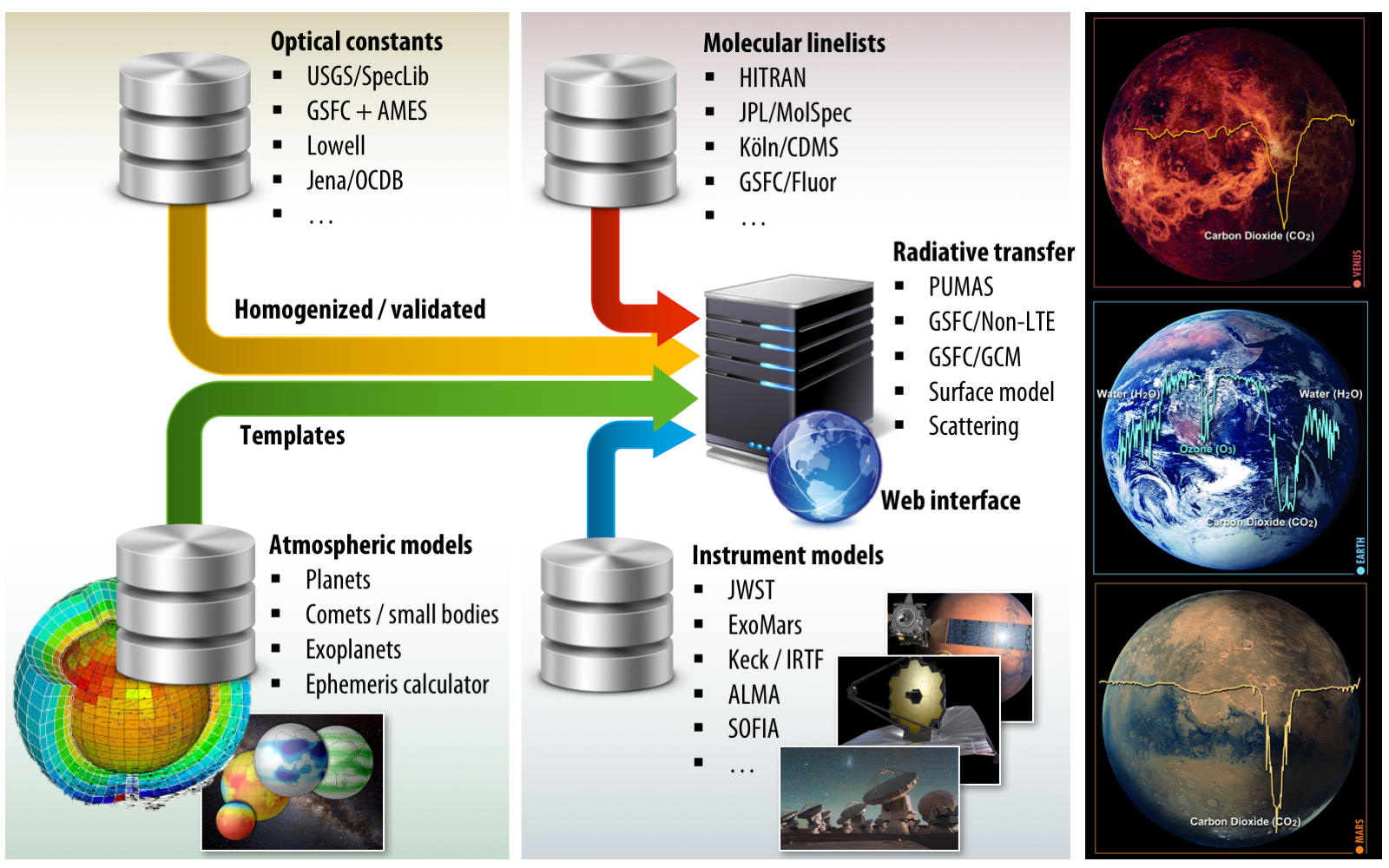 |
| Figure 1: By combining several modern and versatile online radiative transfer models that access state-of-the-art spectroscopic databases, the PSG tool can synthesize a broad range of planetary spectra and regimes, as measured with a broad range of instruments and observatories. |
About the team
The tool was developed and conceptualized in 2015 by Geronimo Villanueva (NASA-GSFC), with the tool first becoming online in 2016. It has been only possible thanks to decades of meticulous work by hundreds of laboratory spectroscopists and radiative transfer modelers. Several planetary scientists have offered their help to further improve the capabilities of the tool, and please contact us if you have further suggestions or recommendations.
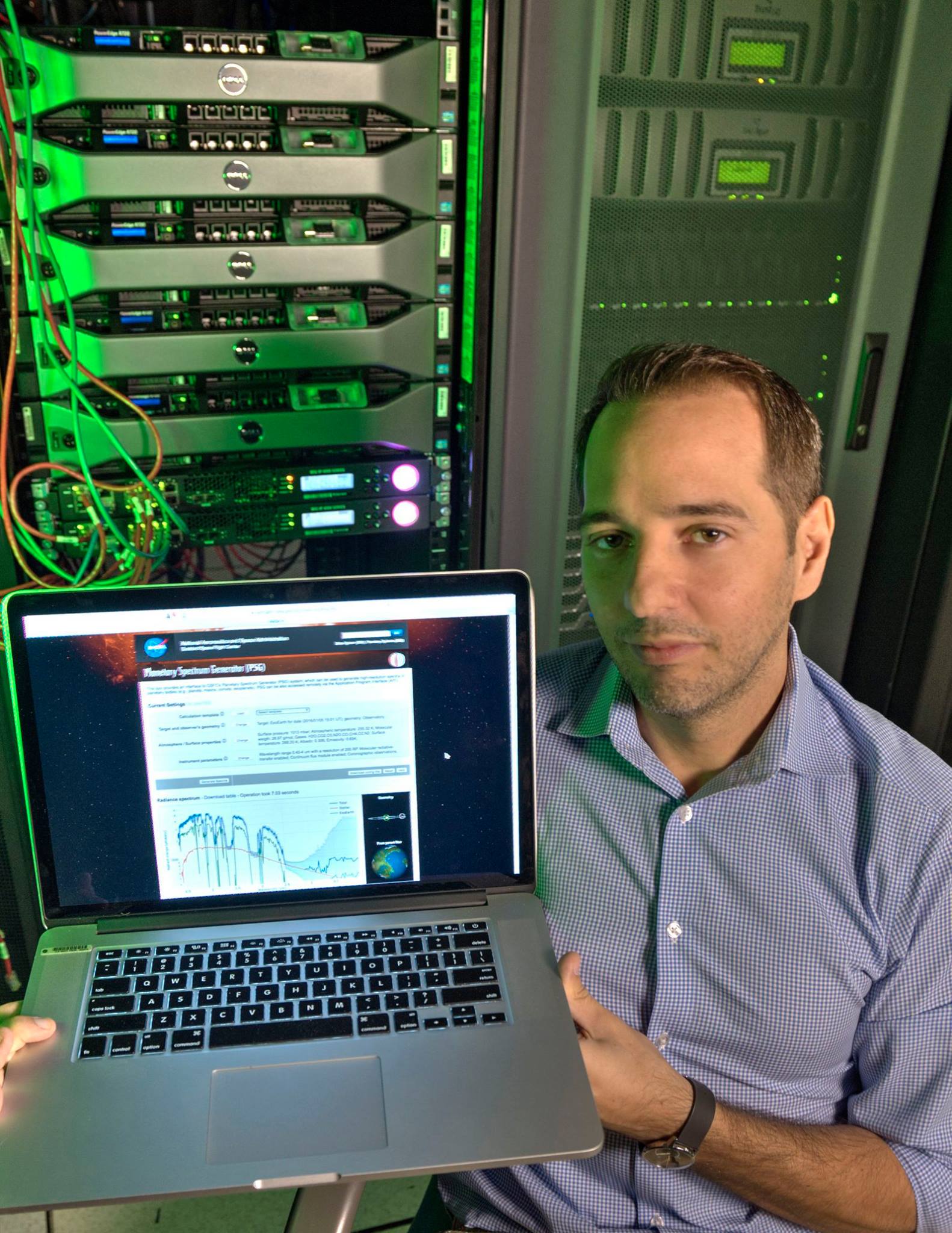
| Geronimo Villanueva is the Associate Director for Strategic Science of the Solar System Exploration Division at NASA Goddard Space Flight Center, and specializes in the search for astrobiology-relevant species on Mars, Venus, Ocean Worlds (Europa, Enceladus), primordial bodies (comets) and in distant exoplanets. He is the Principal Investigator (PI) of the Planetary Spectrum Generator (PSG), Co-lead Scientist of the Comet Interceptor MIRMIS instrument, Co-Investigator of the ExoMars/TGO mission, and leader for Mars and Ocean Worlds studies (GTO) for the James Webb Space Telescope (JWST). In recognition to his work on small bodies, the International Astronomical Union (IAU) named minor planet '9724' after Dr. Villanueva, in 2015 the American Astronomical Society (AAS) honored him with the Urey Prize (young planetary scientist of the year), and in 2023 he was awarded the Lindsay Memorial Award in Space Science by NASA, among other honors and awards. Since completing his Ph.D. studies at the Max-Planck-Institute for Solar-System Research in Germany in 2004, Geronimo has participated in many projects at three space agencies, NASA, ESA and DLR. He is a strong advocate for Space Exploration and Astronomy, participating in numerous public outreach activities promoting science to underrepresented communities and in developing regions. |
 |
 |
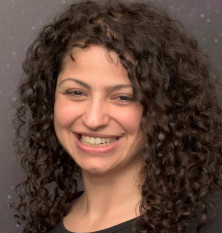 |
 |
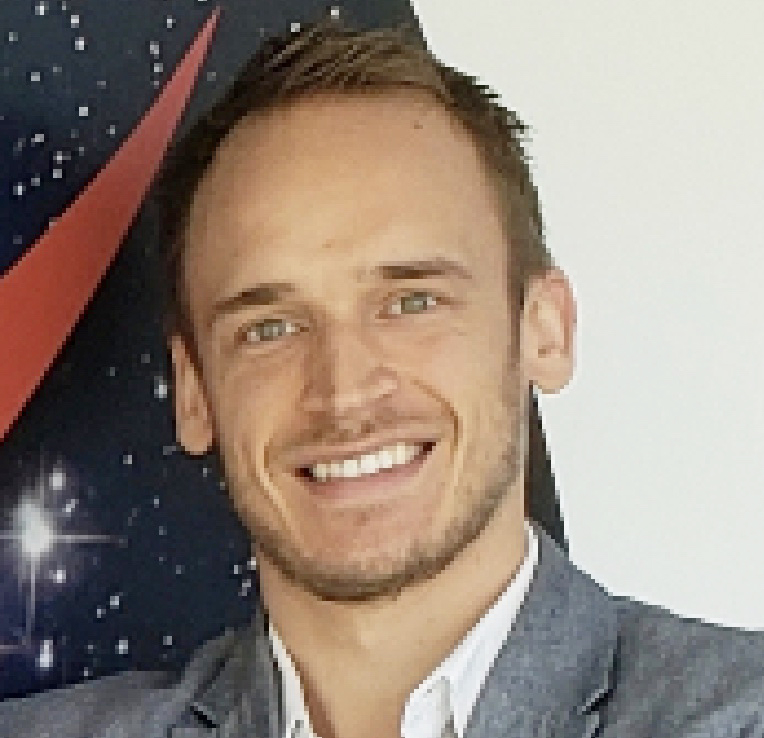 |
 |
| Giuliano Liuzzi (UB/Italy): guides the development of the retrieval and radiative transfer modules. | Sara Faggi (NASA/AU): guides the development of the graphical interface and inter-operability of the modules. | Silvia Protopapa (SwRI): guides the development of the surface modeling of small bodies. | Vincent Kofman (NASA/AU): guides the development of the molecular databases. | Thomas Fauchez (NASA/AU): guides the development of the 3D and GCM modeling capabilities. | Avi Mandell (NASA): guides the development of the exoplanet modeling/retrieval modules. |
Social media:
Related sites
Radiative transfer and modeling tools
- LBLRTM - Line by Line Radiative Transfer Model
- SpectralCalc - Online molecular RT tool
- JPL Horizons orbital calculator
- LMD Mars' Climate Database
- Kurucz's solar and stellar models
Molecular linelists
- HITRAN - high-resolution transmission molecular absorption database
- JPL Molecular Spectroscopy Database
- The Cologne Database for Molecular Spectroscopy (CDMS)
- NRAO Spatalogue radio linelist
- ExoMol - High-energy molecular database
- VPL - List of molecular bands
- Villanueva's fluorescence database
Minerological and ice spectral constants
- RELAB Reflectance Experiment Laboratory
- The PDS Geosciences Spectral Library
- MRO CRISM Type Spectra Library
- USGS Digital Spectral Library
- ASTER Spectral Library
- Grundy's optical constants of Ices
- PDS Ices database
- Database of Optical Constants for Cosmic Dust
- Goddard's Cosmic Ice Laboratory
- Grenoble Astrophysics and Planetology Solid Spectroscopy and Thermodynamics database service
References
Please refer to these publications when employing these PSG modules:PSG: Villanueva, G. L., Smith, M. D., Protopapa, S., Faggi, S., Mandell, A. M., Planetary Spectrum Generator: an accurate online radiative transfer suite for atmospheres, comets, small bodies and exoplanets, Journal of Quantitative Spectroscopy and Radiative Transfer, Volume 217, pp. 86-104 (2018).
| ADS | ArXiv | Flyer | Citations |
PSG-PUMAS: Villanueva, G. L., Mumma, M. J., Novak, R. E., Kaufl, H. U., Hartogh, P., Encrenaz, T., Tokunaga, A., Khayat, A., Smith, M. D., Strong water isotopic anomalies in the martian atmosphere: Probing current and ancient reservoirs. Science, Volume 348, Issue 6231, pp. 218-221 (2015).
| ADS | Citations |
PSG-PUMAS/Scattering: Smith, M. D.; Wolff, M. J.; Clancy, R. T.; Kleinböhl, A.; Murchie, S. L., Vertical distribution of dust and water ice aerosols from CRISM limb-geometry observations, JGR Planets, Volume 118, Issue 2, pp. 321-334 (2013).
| ADS | Citations |
PSG-Hapke/Surfaces: Protopapa et al., Pluto's global surface composition through pixel-by-pixel Hapke modeling of New Horizons Ralph/LEISA data, Icarus, Volume 287, p. 218-228 (2017).
| ADS | ArXiv | Citations |
PSG-CEM/Fluorescence: Villanueva, G. L., Mumma, M. J., DiSanti, M. A., Bonev, B. P., Gibb, E. L., Magee-Sauer, K., Blake, G. A., Salyk, C., The molecular composition of Comet C/2007 W1 (Boattini): Evidence of a peculiar outgassing and a rich chemistry. Icarus, Volume 216, Issue 1, p. 227-240 (2011).
| ADS | Citations |
PSG-CEM/Radio: Villanueva, Geronimo L., The High Resolution Spectrometer for SOFIA-GREAT: Instrumentation, Atmospheric Modeling and Observations. PhD Thesis, Albert-Ludwigs-Universitaet zu Freiburg, ISBN 3-936586-34-9, Copernicus GmbH Verlag (2004).
| ADS | Citations |
Linelist-Fluor-C2H6: Villanueva, G. L., Mumma, M. J., Magee-Sauer, K., Ethane in planetary and cometary atmospheres: Transmittance and fluorescence models of the nu7 band at 3.3 μm. Journal of Geophysical Research, Volume 116, Issue E8, CiteID E08012 (2011).
| ADS | Data | Citations |
Linelist-Fluor-H2O: Villanueva, G. L., Mumma, M. J., Bonev, B. P., Novak, R. E., Barber, R. J., Disanti, M. A., Water in planetary and cometary atmospheres: H2O/HDO transmittance and fluorescence models. Journal of Quantitative Spectroscopy and Radiative Transfer, Volume 113, Issue 3, p. 202-220. (2012).
| ADS | Data | Citations |
Linelist-Fluor-CH3OH: Villanueva, G. L., DiSanti, M. A., Mumma, M. J., Xu, L.-H., A Quantum Band Model of the nu3 Fundamental of Methanol (CH3OH) and Its Application to Fluorescence Spectra of Comets. The Astrophysical Journal, Volume 747, Issue 1, article id. 37, 11 pp. (2012).
| ADS | Data | Citations |
Linelist-Fluor-HCN/HNC/NH3/CH3CN: Villanueva, G. L., Magee-Sauer, K., Mumma, M. J., Modeling of nitrogen compounds in cometary atmospheres: Fluorescence models of ammonia (NH3), hydrogen cyanide (HCN), hydrogen isocyanide (HNC) and cyanoacetylene (HC3N). Journal of Quantitative Spectroscopy and Radiative Transfer, Volume 129, p. 158-168. (2013).
| ADS | Data | Citations |
Security, Performance and Compliance
The PSG servers and applications are frequently tested to ensure the highest standards of security, performance and online compliance. These tests are performed employing state of the art industry tools (e.g., google analytics) that utilize comprehensive and stringent methods. See below the latest scores obtained using these applications on the PSG servers.
 |
 |
 |
 |
 |
 |
| A Security |
A+ Security |
A Performance |
A Performance |
100% Performance |
100% Compliance |
Latest updates
Orbital dynamics and 3D exoplanetary geometry calculations | 2 August 2023 | We have updated the 3D orbital modeling features in PSG, permitting to better model and correct for self-consistency between the entered orbital parameters and the selected planetary geometry. Importantly, this update brings homogeneity to the treatment of solar system objects and exoplanets with respect to 3D orbital modeling, and it accurately allows to operate with arbitrary sub-solar latitudes/longitudes, while preserving full orbital dynamics self-consistency. Auxiliary orbital parameters for all objects in PSG are now stored in the OBJECT-ORBIT field (eccentricity, longitude of ascending node [deg], length of year [days], argument of perihelion [deg], periastron distance [AU], periastron epoch [JD]). When performing observations at large distances (i.e., observatory mode at >0.1 parsec), the sub-observer latitude/longitude entered by the user will be tested for consistency with respect to the entered sub-solar latitude/longitude, season, inclination and auxiliary orbital parameters. They will be updated as needed in order to preserve orbital consistency, yet arbitrary obliquities and polar rotation schemes are permitted. |
Advanced treatment of scattering for surface mixtures | 18 February 2023 | We have added the capability to integrate several advanced scattering models for surface mixtures. A planetary surface is typically not composed of a single homogenous constituent with specific optical properties, but it is normally composed of a mixture of constituents. The optical properties of the aggregate would vary depending on how the constituents are organized and the shape/scattering properties of the separate constituents. Several mixing models (e.g., areal, intimate, intraparticle) do exist that try to approximate and capture the effective optical properties of the aggregate. Beyond the classical areal mixing model, PSG now allows to model layered transmission mixing, Yule-Nielsen superposition mixing, intimate mixing, intraparticle Maxwell-Garnett and several intraparticle exponential laws (e.g., harmonic, Birchak, Looyenga). |
High Operational Temperature (HOT) linelists | 8 February 2023 | We have implemented high-energy linelists into PSG, that supplement the correlated-k tables of HITRAN for several molecules in high operational temperature regimes. These tables are used by default when the maximum temperature in the atmosphere is above 500K. The tables were computed based on the latest H2O, CO and CH4 HITEMP databases, assuming average line parameters in different collisional regimes (e.g., air, CO2, H2, He), and are only available for low-res simulations (RP≤500). A new package labelled 'corrklowhot' was created for the docker installable system that enables this mode in the personal PSG suite. One can disable the HOT linelists when the temperature is beyond 500K, by adding the keyword 'noHOT' in the list of atmospheric processes. |
Optically thick fluorescence modeling | 27 November 2022 | Development of a new method to estimate and correct for optically thick pumps when modeling fluorescence. The method makes use of a new parameter computed by the GSFC fluorescence models, which tracks the representative pump line intensity for every emission g-factor. Using this parameter, the CEM module can then estimate the opacity along the observed column and correct for opacity effects. As the opacity increases across the column for the solar pump, only radiation for the molecules up to tau<1 is considered. This is a first order correction to a complex problem and is only valid for low solar phases. More importantly, by documenting the level of opacity at the pump, PSG can provide a guidance to the user on the level of opacity that the simulation is taking place (i.e., warnings are now provided). See further details in Section 6.3 of Chapter 4 of the handbook. |
Fluorescence models | 28 October 2022 | A complete modernization and update of the GSFC fluorescence linelists was performed. This includes an update of the g-factors and the rotational compilations that incorporate the G pumping coefficients. The updated linelists integrate the latest quantum models (in particular a complete IR set of nu2/nu3/nu9 bands for CH3OH), updated non-LTE equilibrium calculations for dozens of species, and an improved treatment and modeling of daughter fragments (e.g., OH, C2, CN). The new linelists should lead to improved realism in the optical, IR (e.g., JWST), and at radio wavelengths. The CEM cometary model and ATMOSPHERE models were also updated to handle these updated lists. See further details in Sections 5 and 6 of Chapter 4 of the handbook. |
Surface modeling | 21 September 2022 | The surface module was updated to allow for a more granularized parameterization of the surface scattering parameters. Specifically, the fields SURFACE-MODEL and SURFACE-PHASEMODEL are now separated and each describe the type of model and the parameters for each component. The web GUI was also updated to ease the input of these parameters, with a detailed set of dropdowns/textboxes tailored for each scattering / phase model. |
